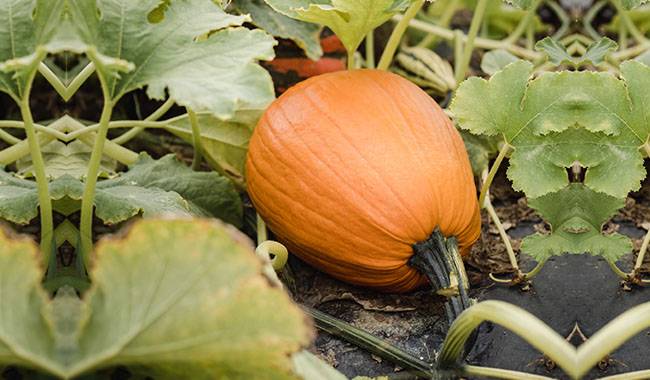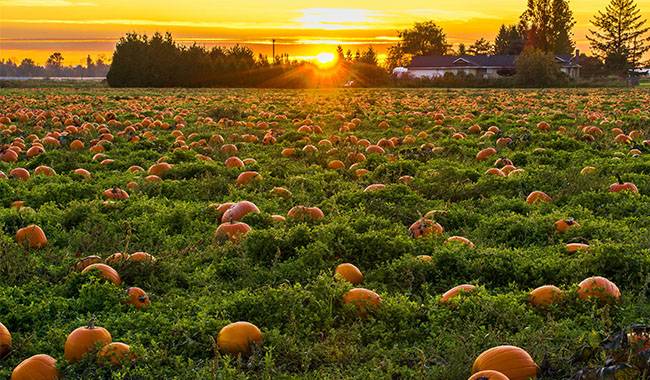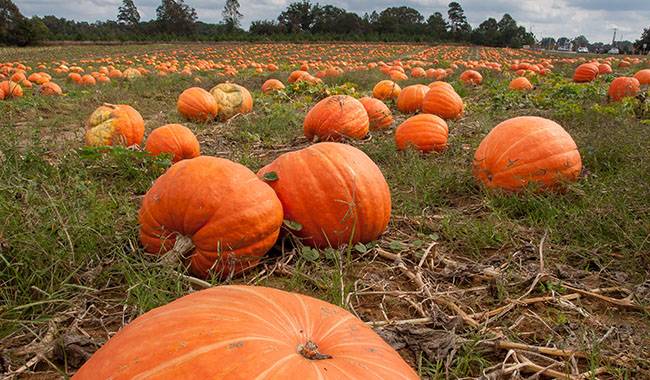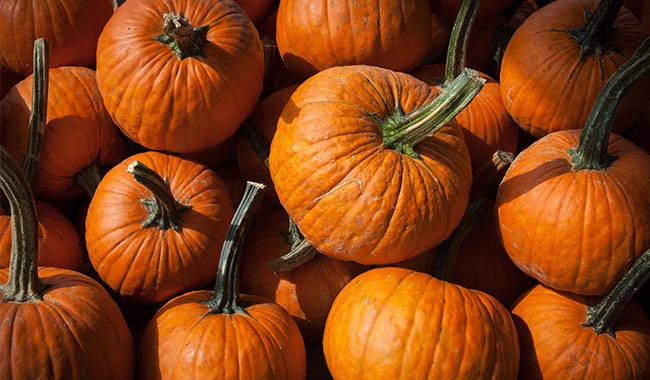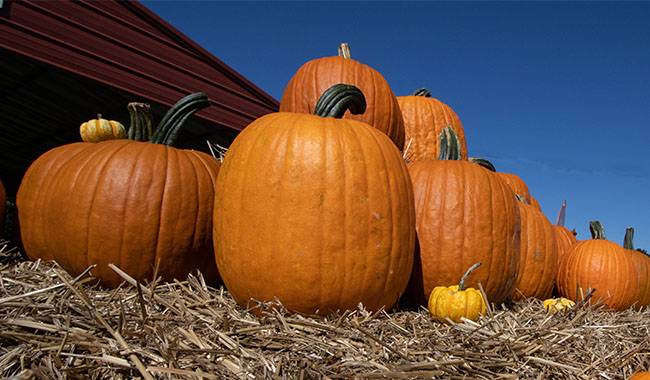
Despite the beauty of this sun-drenched berry, not all gardeners grow pumpkins. And for a good reason! It is an excellent dietary product that does not require much agronomic effort to grow. It is known to be widely used in folk medicine. The medicinal properties of the crop are recognized by official pharmacology. Ornamental plant. This is an opportunity not only to decorate your plot but also to occupy open space. This article will explain how to grow pumpkins, as well as related growth, care, and pumpkin varieties.
Archaeologists have discovered the oldest domesticated pumpkin seeds in Mexico’s Oaxaca Plateau. Pumpkins are believed to have originated in Central America more than 7,500 years ago. The original pumpkin bore little resemblance to the sweet, bright orange variety with which we are familiar. The original pumpkins were small, hard, and bitter-tasting. Rather than taking advantage of the pumpkin’s nutrition and readily available seeds, pre-Columbian indigenous people grew pumpkins for their pulp. They were one of the first crops to be grown for human consumption in North America. Because of their firm, thick flesh, pumpkins proved to be ideal for storage during cold weather and times of scarcity. Forming up to 551 pounds (250 kilograms) of fruit under optimal conditions, pumpkins also bring unprecedented yields per fruit to farmers in mild and warm regions of the U.S. Pumpkins come in all shapes and sizes, from a few ounces to 2,300 pounds (over 1,000 kilograms). This master list provides characteristics and culinary suitability for each. If you want to find the best pumpkin or winter squash to make pumpkin pie, carve, decorate, store for later use, make cookies, pumpkin spice muffins, soups, stir-fried, or bake!
CHEMICAL COMPOSITION OF PUMPKIN
This vegetable crop of pumpkin contains up to 11% of sugar and 6-20% of starch. The pulp is rich in vitamins, including “B1”, “B2”, “B5”, “C,” “E,” “PP,” “K,” and contains potassium, magnesium, calcium, iron, and trace elements, including copper, cobalt, zinc, and others. The list of useful substances contained in fruits includes pectin, fiber, protein, enzymes. Seeds with fatty oils containing 40-48% organic acid glycerides (including linolenic, oleic, palmitic, and stearic acids) are particularly useful.
The seeds, especially after heat treatment, have a distinct aroma of essential oils and resinous substances. They contain phytosterols, cucurbitacins, carotenoids, and other useful substances. Pumpkin flowers are known to be equally rich in useful substances. They can be used as medicine or as food. They quickly restore lost strength, especially in the spring when immunity is reduced, and vitamin deficiencies are present.
USES OF PUMPKIN
The fruits and seeds of pumpkin have many useful medicinal properties. Pumpkin pulp is an indispensable product in diseases of the gastrointestinal tract and pancreas. Ophthalmologists recommend a pumpkin diet for patients with certain vision problems. Pumpkin is one of the indispensable dietary products used in metabolic disorders of various etiologies, obesity. The seeds are classified as a natural aphrodisiac with rejuvenating properties due to their high zinc content.
Natural compounds, vitamins, flavonoids slow down the aging process and have a positive effect on male libido. By the way! Pumpkin seeds are second only to oysters in zinc content, which is necessary for men to increase testosterone. Adults and children have a healthy thyroid gland responsible for the body’s immunity.
Doctors recommend eating 50-60 pumpkin seeds a day. Women are the basis of natural cosmetics, used in rejuvenation, cleansing masks, tonic, creams, refreshing lotions, formulas to remove freckles and age spots. Pumpkin pulp is a champion of iron and is recommended for the treatment of anemia. A great anti-helminthic agent.
The medicinal value of pumpkin and the breadth of its uses in folk and official medicine is incalculable. But pumpkin is also a great gastronomic product: a basis for pumpkin porridge, a filling for cakes, baked in the oven, in vitamin fresh salads, in the form of pumpkin juice. Pumpkin is an integral part of a large number of national dishes.
TYPES AND SPECIES OF PUMPKIN
The scientific name for pumpkin is Cucurbita pepo. We have included the closely related giant pumpkin (Cucurbita maxima) and the winter pumpkin (Cucurbita moschata) because they are often used interchangeably in cooking and decoration. Pumpkins prefer a long (60 to 130 days), warm growing climate with ideal temperatures of 68°F to 90°F (20°C-32°C); however, hot, humid climates make them susceptible to fungal infections. They need full sun and fertile, well-drained soil.
- Giant pumpkins are the huge pumpkins you see loaded on trucks for display. A typical contest winner weighs over 1,000 pounds (450 kg)
Jack O Lantern pumpkins were developed for size and high roundness, but their grainy texture and lack of flavor make them less suitable for cooking. They will make but one pie or eat pumpkin.
Pie pumpkins, eating pumpkins, and winter squashes, are a huge variety of shapes, colors, sizes, textures, and flavors.
GROWING PUMPKINS
Pumpkin is an annual plant with climbing stems. It can climb with tendrils on supports on the ground. The flowers are yellow, large, and have separate sexes. Pollination is cross-pollination. The fruits of the vegetable crop range from 1.1 Lb (0.5 kg) to 44-66 Lb (20-30 kg). According to media reports, some giants reached 617 Lb (280 kg), while a student in Bavaria grew a pumpkin weighing more than 1212 Lb (550 kg), thus setting a European record.
Requirements for the environment
Pumpkin is a heat-loving plant. The soil needs to be warmed to 59°F (15°C) at sowing, and fruit formation begins at 59-62°F (15-17°C). It readily tolerates high temperatures of 77-86°F (25-30°C). During the growing season, it forms a large above-ground portion. The stem can reach 16-23 feet (5-7 meters). To provide itself with water, additional root systems appear on the pumpkin stems. Pumpkin plants prefer the sun but can also tolerate shade (shade tolerance).
Forebody
When cultivating pumpkin in a crop rotation, potatoes, cabbage, and early tomatoes are the best precursors. Pumpkins are sown late in the field, so the open space in early spring can be occupied by early crops – radishes, salads, onions for vegetables, etc. It is best to plant 2-4 shrubs outside the crop rotation, along fences, near pergolas and trellises in no-man’s land. By clinging to the supports, pumpkins will dignify the plot by covering the outer walls and other inconvenient places with decorative greenery.
Preparing the soil and sowing the pumpkin in the crop
Due to its large foliage, pumpkin has a high demand for nutrients. Therefore, if you want to prepare a pumpkin patch in the fall, you should fertilize it well. Pumpkins are particularly responsive to organic matter. Starting in the fall, you must make sure to add humus, compost, or humus at 1.5-2 buckets per 11 square feet and 50-60 grams per 11 square feet of nitrocellulose under re-cultivation.
Sow pumpkins in the open ground after mid-May, but more practically (in the region) when the 4inch (10 cm) layer of soil is heated to 57-59°F (14-15°C). It is best to sow the seeds in a square neck fashion, leaving 20-24inch (50-60 cm) between each row and row. Seeds are sown into 1-2inch (2.5-5 cm) layers with 1-2 seeds in each layer. After germination, remove weak plants.
Prepare the soil and sow pumpkins outside the crop rotation
If pumpkins are planted outside the crop rotation, the soil can be left unprepared from the fall. Before planting, make 1/4 bucket of humus or mature compost and add 30 grams of urea or nitrocellulose to individual plots 15-23inch (40-60 cm) in diameter. Dig the mixture by mixing it with the soil, but preferably without turning the layers, and pour in half a bucket of water. After soaking, plant 2 seeds at a distance of about 4-6inch (10-15 cm) to a depth of 1-2inch (2.5-5 cm). Sometimes 2 seeds are planted in a hole, but the weaker one is removed after germination.
Preparing the soil and planting pumpkin seedlings
In areas with short warm periods, pumpkins can be grown in the open through seedlings. Pumpkin taproots are not resistant to picking, so seedlings should be grown in peat soil pots or other containers with removable bottoms so that the integrity of the root system is not disturbed when transplanted into the open ground. Plant seedlings in pots one month before planting in the open (roughly in May). Place the pots in a warm greenhouse or at home.
Care is carried out as usual. After the start of sustained warm weather (roughly in the first half of June), the seedlings will be moved outdoors. Sometimes seedlings can be planted outdoors in advance. In this case, plants are covered with crop cover nonwoven fabric or other material to prevent possible frost or a sudden drop in temperature. Pumpkins are a heat-loving crop and do not tolerate frost, even if it is a small frost.
When planting young seedlings in the ground, prepare wells in advance, spacing each row 27-35inch (70-90cm) apart. The width of the rows should be at least 40inch (1 meter) apart. Planting schemes may vary, but the density is 1-2 plants per 16-21 square feet. Apply 1/3 bucket of humus and 30 grams of nitrocellulose to the prepared holes. After mixing, pour 0.25-0.5 Gal (1-2 liters) of warm water and submerge the nursery pots (peat soil) in the soil slurry. If the container is different (plastic cups), cut the sidewalls and gently move the seedlings into the holes. Mulch the soil around the planted seedlings.
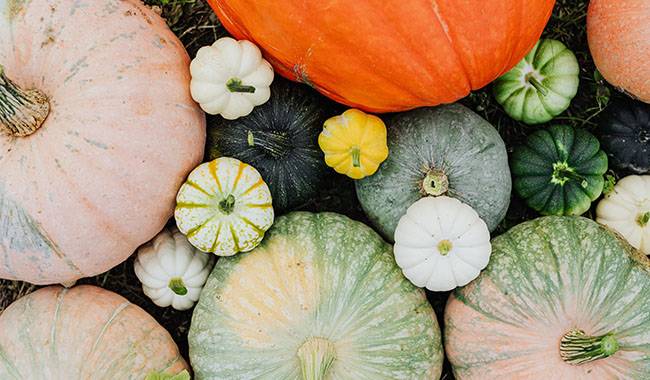
PUMPKIN CARE
Care for open ground pumpkins is to keep the area free of weeds, constantly loosen the soil until it is completely covered by the pumpkin pieces on the ground, fertilize and water, and prevent pests and diseases. Separate the formed, growing pumpkins from the soil with bedding (cardboard or other material).
Fertilization
- Pumpkins should be fertilized for the first time at the stage of 3-5 true leaves. Apply 5-7 grams of nitrocellulose per shrub under the roots and 10 grams per shrub in poor soils. On moist soils, add fertilizer by loosening the soil layer by 2-2.8inch (5-7 cm) if the soil is dry, water after application.
- The second application of fertilizer is made when the stalks begin to form. Apply 10-15 grams of nitrocellulose to each bush, depending on the fertility of the soil under irrigation.
- Between applications, 2-3 cups of wood ash can be applied every 11 square feet. Vegetable gardeners practicing on poor soils recommend a solution of 0.5 Gal (2 liters) of cowpea per bush at the beginning of vegetation and 0.8 Gal (3 liters) during the heavy fruit ripening stage. The solution is prepared at a ratio of 1 part cowpea for every 9-10 parts water.
Watering
The large above-ground flora and the formation of large fruits require large amounts of water. Due to the structure of the tissue, pumpkins do not retain water on the ground but immediately evaporate through the leaves, creating a local greenhouse effect and increasing air humidity. Be careful! If watering is sparse or the soil is too dry, especially during flowering, pumpkins will stop forming female flowers. It is best to water between the rows, soaking the soil deeply. In the initial stages of development, the soil should be covered not to lose moisture or become hot in the sun.
There is one peculiarity when watering. Pumpkin does not tolerate cold water. Therefore, it cannot be watered from artesian wells or other cold sources. The irrigation water must be at least 68°F (20°C). Remove any weeds from above the pumpkin planting site before irrigation.
PROTECTION FROM DISEASES AND PESTS
Root rot, false and true powdery mildew, Rhizoctonia, and phytophthora are the most common in pumpkin plants. To combat them on private plots, only biological agents that are not harmful to human and animal health should be used. It is better to prepare a tank mixture of biological fungicides. In the mixture, they are effective against rot diseases and repellents. Among other biological agents, plant proteases, gliadin, exogenous proteases, etc., are effective against the above-mentioned diseases. However, biological agents do not produce the desired effect after a single application. Treatments with mixtures and single biological agents applied several times throughout the vegetation period are effective. Fogging solution is sprayed every 10-12 days throughout the summer season.
Among the pests, the following suckers – melon aphids, spider mites – cause significant damage. Biting are moths, meadow moths, and moth larvae, caterpillars from the soil – iron nematodes, etc. Biological insecticides protect plants and soil by repeated treatment without causing harm to humans and animals: Bitoxybacillin.
Dosage and treatment can be found on the package or in the accompanying documentation. When purchasing a biological preparation, be sure to check the expiration date. If you use a biological preparation, its effect lasts for 10-12 days. This is a period during which treatment must be repeated. Biological preparations must not be stored together with chemical preparations. Such an arrangement will kill the live crop.
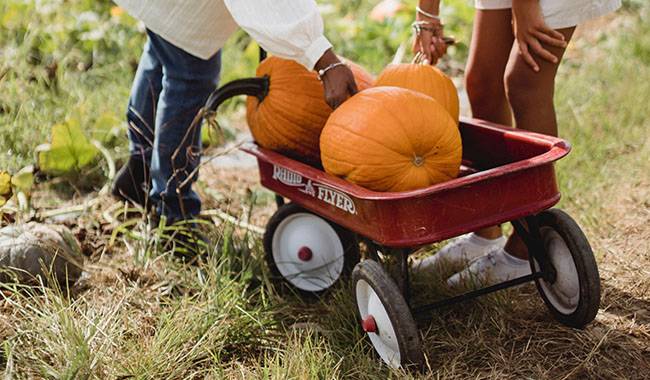
FOOD VARIETIES OF PUMPKIN
There are five common varieties of Cucurbitaceae: ficifolia (chilacayote squash and Malabar gourd), maxima (Hubbard, ‘Lakota,’ buttercup, and winter squashes), mixta (cushaw squash), moschata (‘Shakertown Field’ and ‘Long Island Cheese’ pumpkins), and pepo (jack-o’-lantern varieties, delicata squashes, ornamental gourds).
- Jack-Be-Little – As cute as their name implies, these edible, palm-sized mini-fruits become more uniform as they ripen. They are perfect for personal table setting or small space decor (along with other mini pumpkins like Baby Boo, Munchkin, or Sweetie Pie).
Field Trip F1 Hybrid – These orange gourds weigh 5 to 7 pounds each and have long, sturdy stems that are perfect for kids to grab and go.
Rouge Vif D’Etampes – This classic heirloom was called the most popular pumpkin in the Paris market in the 1880s by the famous French seed company Vilmorin. Its name translates to “bright red from Etampes,” a nod to the medieval town south of Paris where it was grown for the market. Its charming shape and color make it an extraordinary decoration for fall displays. More than just a beautiful pumpkin, this variety is the standard for French soups. - Jarrahdale – This Australian heirloom is flavorful, almost stringless, and tasty, with colors ranging from grayish to blue-green. Other notable blues are the light blue Blue Max, Kabocha and Kakai (all popular in Japan), and Blue Lakota, a flat sphere shape.
- Baby Boo – These spooky white beauties are known for their long, distinctive handles, often in warm shades of green, as well as their bright white hues and excellent shapes. This pumpkin is perfect for creating decorative holiday or seasonal displays with lots of contrasting colors. The color of this pumpkin will not change easily with sun or frost. Other notable white pumpkins are Lumina, Sirius, and Super Moon.
- Fairytale – Also known as musquee de Provence, they are dark leafy and very popular. Chefs love their sweet, creamy flavor.
Long Island Cheese – The color of this pumpkin resembles light cheese, hence the name. This medium-sized pumpkin usually weighs about 10 pounds, has slight ribs, and is known for its sweeter flavor. This classic pumpkin dates back to the 19th century. - Galeux d’Eysines – This gorgeous French heirloom makes a flat globe with a salmon peach rind. The knobby, shell-like bumps on this French heirloom (also known as galeux d’Eysines) are caused by the accumulation of subcutaneous sugar.
- Tandy F1 Hybrid – This understated variety has pale walnut skin, a slightly oval shape, and strong green stems.
- Black Futsu – This rare Japanese specialty is known for its distinctive black, warty skin and fresh, nutty flavor. The bright orange flesh is firm in texture, sweet and buttery when roasted, and lightly fruity when eaten raw. Delicious shredded and quickly salted in a winter salad. They ripen in winter storage when the green halo between the flesh and the skin disappears, and the skin changes from black to maroon.
- Warty Goblin F1 Hybrid – Dare to put your little hands on this creepy performer with its scary, lumpy warts that pop out on shiny skin.
- One Too Many F1 Hybrid – A round white fruit with red veining, it looks like bloodshot eyes the next morning; hence its cheeky name.
Cotton Candy – The glowing ghosts of the pumpkin world, they even have white flesh under their white shells.
The diversity of pumpkin varieties makes it possible to choose an ideal variety that is sweet, sturdy, resistant to pests and diseases, and does not require any treatment. Detailed characteristics when choosing a variety can be found in the relevant vegetable catalogs.
HARVESTING AND STORING PUMPKINS
Pumpkins have a long shelf life without losing their flavor. Some varieties can be stored for up to a year under optimal conditions. The varieties that can be stored are those with large fruits. Nutmeg varieties, through the variety development process, have lost their storability. They will not be stored for more than 2 months. This should be taken into account when storing, and varieties with a shorter shelf life should be used first.
The time of harvesting is indicated by the rich color and the dried shoots of the crop. Harvest in warm, dry seasons before the onset of frost. Frozen gourds damaged by machinery should be used immediately for processing and winter storage. When harvesting squash, leave a 2-3inch (5-8 cm) stalk to avoid compromising the integrity of the fruit. If the weather is gloomy and rainy, store the harvested fruit in a closed, dry room, dry them in the sun and then put them away for storage.
The products can be stored in different places (sheds, attics, kitchens, storage rooms). Storage conditions: temperature at least 50°F (10°C), dry room. Frozen products store well. Sliced pumpkin can be used gradually.
More Related Information About Planting & Growing Pumpkins Plants




